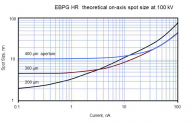New 12-inch fab in Shenzhen by Huarun Semi. 40nm. Car/Power related.
I just wanted to post this other link regarding to cr micro on top of yours. Great example here of what's happening in the Chinese ic industry. They are about to start production on new 12 inch fab in Chongqing later this year with capacity of 30k wpm. Mostly mos and igbt power chips. They already produce power chips for cars, industrial product and new energy products. Total 7.55 billion rmb investment but large part of that paid off by govt in a jv. Significantly derisk the project for cr micro.
They also got another 8 inch fab under construction and now this new Shenzhen fab for 22 billion rmb. Which is a lot of money but Shenzhen govt and 3rd party investors pay a good portion of it and cr micro still controls 75% of jv. I wouldn't be surprised if smic jvs with local govt, they pay very little of the capex because they end up with normally 60% control of jv. Given the high margins of this business, the local govt can still get positive return of investment.
22 billion is a lot of money. Maybe they are looking for a 75k wpm fab. They must have received large orders.
I think this is the folly of American actions. Because they are no longer an industrial power, they completely ignore this segment. There is not question china will dominate this sector. They have all the tools to do so. And since most of world actually needs industrial and auto chips, they will end up relying on Chinese supply chain in 5 years or so. When it comes to the sanction, America is way too focused on the advanced nodes and ignore the harm on the mature markets
Once Chinese tool makers ramp up production, I don't see how lam and amat compete in this sector.
There has been no slow down in new projects or existing projects from what I can see in the advanced node. China is fully capable of supplying all the tools needed for 28 and more mature node now. The increased production of smee next year will fill the remaining gap.
Maybe the sanctions slowed down ymtc or smic, but even that is not so obvious.
He explicitly called it "Sino-US technology war". I'm impressed. I also used that definition, but I'm just a random guy, not a very high level official doing a public conference.
US is playing hard ball here...but China accepted the challenge and is fighting back, without much fanfare, but possibly with even more determination and focus.
I think you are right. The issue is that us govt right now is drunk on power so they don't think about the long term ramifications. We will see if they can force the Dutch govt to not allow asml supply china, because the speaker in this case very much discussed about the desire for globalization and finding trusted international partners. I don't think Japanese or Koreans will be persuaded to go in the other direction.
I don't think they can get Europeans to stop buying Chinese industrial chips. I don't think they can stop china from building fabs ok Europe that will bring jobs to Europe. So, what is the option? China's end goal is to produce a supply chain that centers around china that doesn't sanction other countries. In the end, if there are two main supply chain, the one that's cheaper, more customer friendly and less threatening will win. European govt tried their hardest to get the automakers to not work Chinese suppliers but VW is now all in with china because Chinese suppliers are the most convenient and best for value. Similarly, Korean and taiwanese semi industry that face American threat will bolt for the first alternative.



